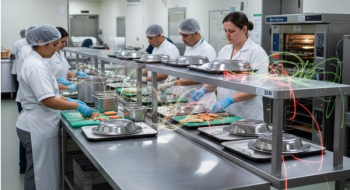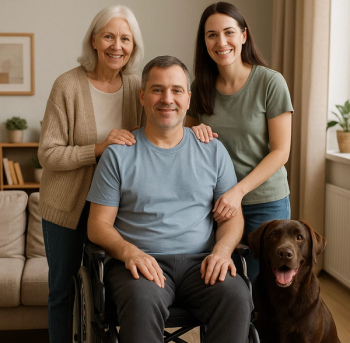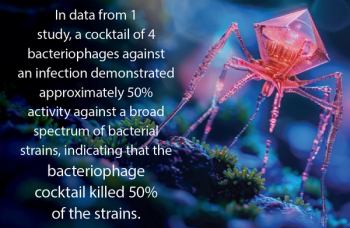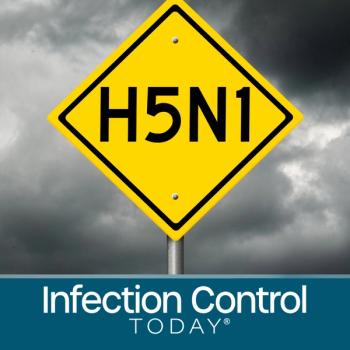
A Roadmap to Address Risk Factors of Non-Ventilator Hospital-Acquired Pneumonia in Hospitals
Launching a hospital-wide program for non-ventilator hospital-acquired pneumonia (NV-HAP) necessitates a clear structure and toolkit.
Since implementing the 2008 Hospital-Acquired Conditions (HAC) Reduction Program by the Centers for Medicare and Medicaid Services (CMS) and the CDC, hospital patient safety protocols have undergone significant transformation, with a pause during the COVID-19 pandemic. Despite efforts to mitigate hospital-acquired infections, a critical patient safety gap persists—non-ventilator hospital-acquired pneumonia (NV-HAP)—a nosocomial condition overlooked in the current requirements for hospital-acquired infection surveillance.1,2 A comprehensive 2023 multisite study encompassing 284 US hospitals empirically documented NV-HAP's harmful impact, attributing NV-HAP to one in 14 hospital deaths and a 22.4% inpatient mortality rate.3 In addition, NV-HAP increases the risk for sepsis, prolonged hospitalization, discharge to hospice or skilled nursing facilities, and intensive care unit (ICU) utilization, and it escalates health care costs.3,4 Despite these known risks, most hospitals are unaware of their NV-HAP rates and have not implemented prevention programs to address the harm.
Conquering NV-HAP: Lessons from Pioneering Hospitals
Despite no requirements for hospitals to monitor or address NV-HAP, many hospitals have launched evidence-based safety initiatives to reduce NV-HAP that emphasize daily oral care and mobility protocols. Several large health systems, such as the Veterans Health Administration,5 Kaiser Permanente Hospitals,6 Sutter Health,7 and others8 have launched successful efforts to reduce NV-HAP that improved quality metrics and reduced mortality and, in the case of Kaiser, reduced use of antibiotic starts in their hospitals. Notwithstanding these success stories, establishing and maintaining NV-HAP prevention programs has proven daunting for institutions. Another hospital published a summary of their decade-long experience with an NV-HAP prevention program called I-COUGH.8 Within 2 years, they noted a decline in adherence to prevention protocols. They rejuvenated their efforts and restored their positive trends in patient safety.8
Based on the ideas shared by these hospital systems, launching a hospital-wide program for NV-HAP requires a clear structure and toolkit. The experience of a hospital system in Iowa with Stryker Sage’s line of oral care tools to help address the risk factors of NV-HAP provides an excellent guide for hospitals. In partnership and with grant funding from Delta Dental of Iowa, a facility in eastern Iowa reduced NV-HAP by over 20%.9,10
Keys to Successful NV-HAP Reduction Programs
Leadership at the hospital, in response to the published studies on the harm from NV-HAP, investigated their rates by analyzing the ICD-10 codes related to cases of NV-HAP. ICD-10 codes quantified the impact of NV-HAP. Additionally, a hospital-wide observational study demonstrated that patients were not receiving adequate oral care and lacked access to oral care supplies. In response to this data, the hospital launched a 4-year program to improve NV-HAP outcomes. The goals for this initiative: Success Pays: Implementation of an Oral Care Improvement Process to Reduce Non-Ventilated Hospital Acquired Pneumonia were to: (a) create awareness for organizational leadership, nurses and clinicians, patients and families about the importance of reducing NV-HAP and the role of oral care, (b) implement an oral care guideline for all hospital units (excluding OB Services), and (c) improve access to high-quality oral care supplies.11
Implementation of Standardized Daily Oral Care and Improved Supplies
Based on research demonstrating the effectiveness of oral care in NV-HAP prevention, the success of this quality improvement (QI) project also depended on the standardization of oral care with improved oral care supplies across all hospital units. They began with an NV-HAP knowledge and oral care perception pre-assessment survey for staff and leadership.11 Next, new oral care tools were implemented based on the American Dental Association (ADA) oral care protocol.12 These clinical guidelines and protocols provided evidence-based practice information to help nurses manage daily oral care for their patients. In addition, infection control clinicians and educational experts did continuous observational rounding in patient care areas monthly and, after oral care was established, every quarter. Over 3,000 patients were assessed during the project for the availability of oral care supplies in the patient’s rooms and the patient’s awareness of the importance of daily oral care.
Original oral care supplies were low quality and did not meet the ADA standards for a soft-bristle toothbrush, toothpaste with sodium bicarbonate and/or fluoride, antiseptic oral rinse, and non-petroleum-based mouth moisturizer.12 As a result, and with the grant funding from Delta Dental of Iowa, the hospital decided to implement new oral care products. The new oral care kits consisted of an ADA-approved soft-bristle toothbrush, sodium bicarbonate toothpaste, oral debriding rinse, and non-petroleum-based moisturizer for all non-ventilated, independent patients. With the Stryker Sage oral care supplies in place, the hospital launched a comprehensive education program that included medical-dental-nursing clinicians as an integrated community. The education toolkit used for improvement included the following:
- Leadership and medical staff education sessions
- Training and oral care skills labs for all nurses and clinicians provided in partnership with dental hygienists
- Competency validation and documentation in orientation
- Just-in-time training and awareness during staff huddles
- Patient and family education was provided upon admission, discharge, and during leadership rounding with patients
Monitoring Results and Ongoing Success
In partnership with Stryker Sage’s CustomerOne data analysis team, as part of their Non-vent Partnership Program, the hospital tracked NV-HAP cases and oral care access for patients. From 2020 to 2023, they saw a reduction in NV-HAP and an improvement in access to oral care supplies. With administrative support and their strong community partnership with Delta Dental Iowa, the hospital sustained its NV-HAP program over 4 years with ongoing improvement in patient safety.
Hospitals are dynamic institutions. This QI project experienced several challenges, including the COVID-19 pandemic and a change in hospital system ownership. Despite these challenges, the blueprint for success worked. Success included interprofessional partnerships and connections with the experts in oral care - the dental profession. The partnership with Stryker was critical, not only for supplies that aligned with the ADA-approved evidence-based protocol but also for assistance through their CustomerOne data team. Using this roadmap, hospitals can step up to NV-HAP. It begins with understanding the incidence of NV-HAP and then taking action to launch a daily oral care program.
References
- Magill SS, O’Leary E, Janelle SJ, et al. Changes in prevalence of health care–associated infections in U.S. hospitals. New England Journal of Medicine. 2018;379(18):1732-1744.
- Hospital-Acquired Condition Reduction Program (HACRP) Overview. CMS.gov. Accessed December 23, 2024. https://qualitynet.cms.gov/inpatient/hac.
- Jones B, Sarvet A, Ying J. Incidence and outcomes of non–ventilator-associated hospital-acquired pneumonia in 284 US hospitals using electronic surveillance criteria. JAMA. 2023;6(5):e2314185.
- Munro S, Baker D, Giuliano K, et al. Nonventilator hospital-acquired pneumonia: A call to action: Recommendations from the National Organization to Prevent Hospital-Acquired Pneumonia (NOHAP) among nonventilated patients. ICHE; 2021;42(8): 991–996.
- Hospital-Acquired Pneumonia Prevention by Engaging Nurses (HAPPEN) implementation guide. U.S. Department of Veterans Affairs. Updated October 11, 2022. Accessed December 23, 2024. https://www.va.gov/nursing/docs/happen/HAPPEN-Guide-Non-VHA.pdf.
- Lacerna C, Patey D, Block L, et al. A successful program preventing nonventilator hospital-acquired pneumonia in a large hospital system. SHEA. 2020;41(5): 547-552.
- Baker D, Quinn B, Ewan V, Giuliano K. Sustaining quality improvement: long-term reduction of nonventilator hospital-acquired pneumonia. Journal of Nursing Care Quality. 2018;00(00):7.
- Cassidy M, Rosenkranz P, Macht R, et al. The I COUGH Multidisciplinary Perioperative Pulmonary Care Program: one decade of experience. The Joint Commission Journal on Quality and Patient Safety. 2020;46(5):241-249.
- Delta Dental of Iowa Foundation Awards $227,548 to Genesis to Improve Oral Health of Patients. Genesis Health News. January 10, 2023. Accessed December 23, 2024. https://www.genesishealth.com/news/2020/delta-dental-of-iowa-awards-227548-grant-to-genesis/.
- Cooper C. Start the week off right: oral care matters and can save lives. Quad-City Times. https://qctimes.com/news/local/start-the-week-off-right-oral-care-matters-and-can-save-lives/article_86062b0e-66e4-5689-905e-01a808226ac8.html. June 22, 2021. Updated June 8, 2023. Accessed December 23, 2024.
- Holst A, Mills H. Innovations in learning and practice change: re-thinking traditional learning venues in a pandemic. Poster Presented at Professional Nurse Educators Group (PNEG) Annual Conference 2021, September 30-October 1.
- Quinn B, et al. Non-ventilator health care-associated pneumonia (NV-HAP): Best practices for prevention of NV-HAP. American Journal of Infection Control. 2020;48(5):A23-A27.
Newsletter
Stay prepared and protected with Infection Control Today's newsletter, delivering essential updates, best practices, and expert insights for infection preventionists.






